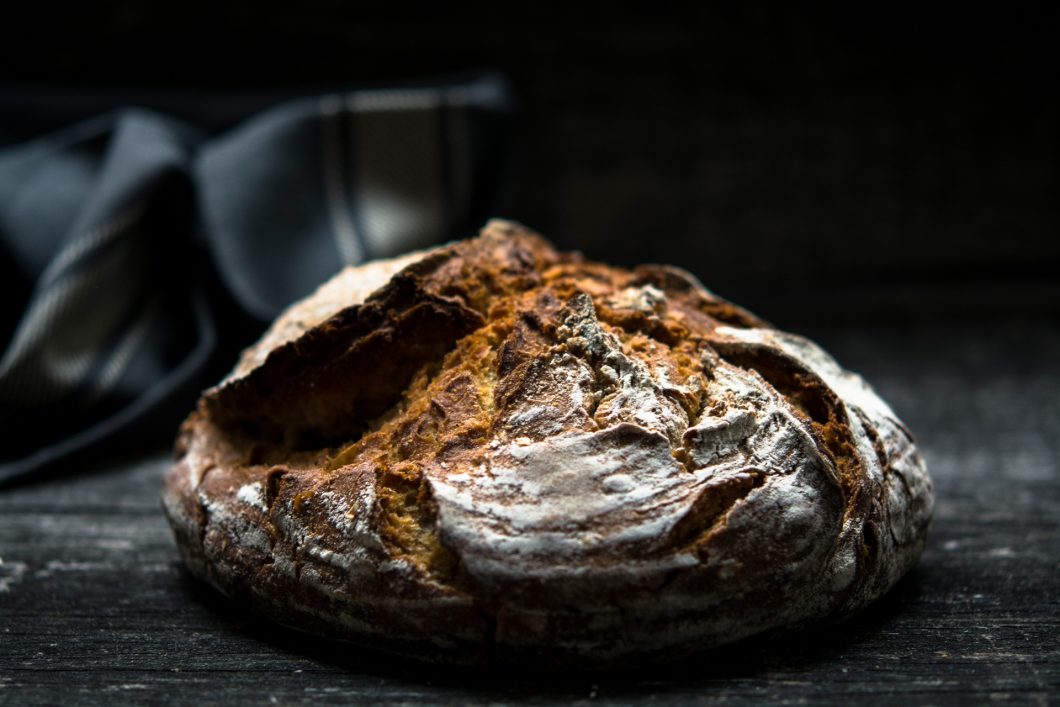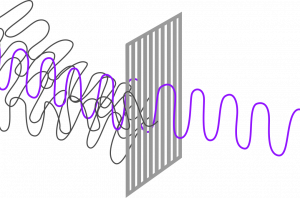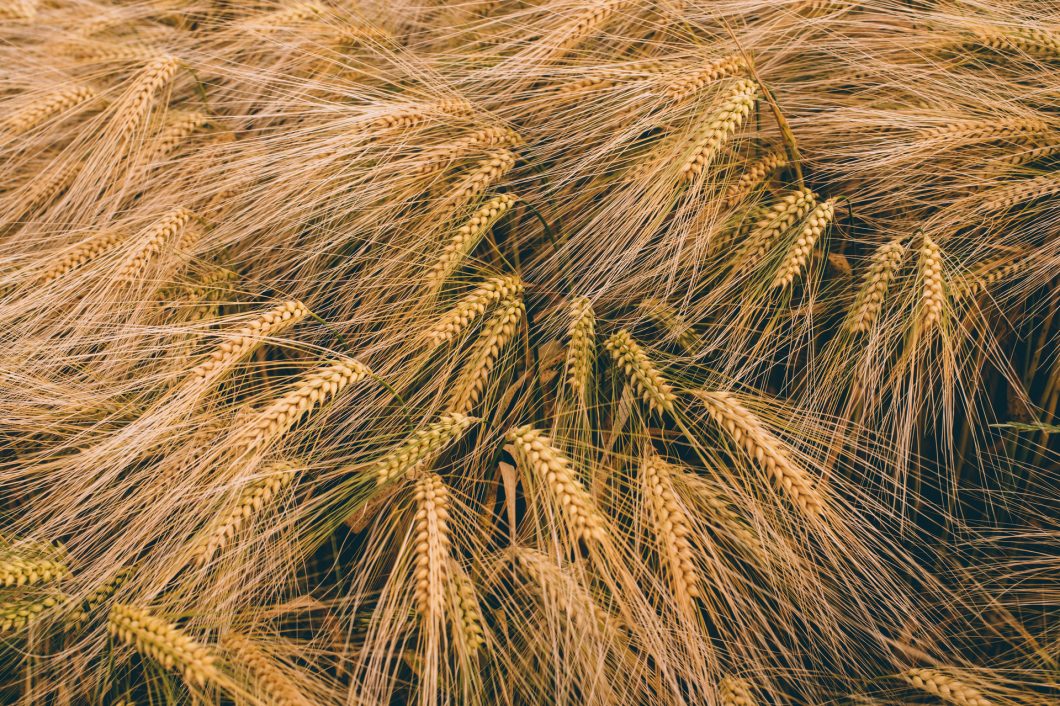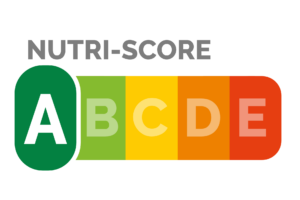Dextrin – from seed to Eureba
Product development • Every time you bake bread, you make dextrin. It happens in the crusts of the bread; the starch is converted by the heat to dextrin. There are different types of dextrin. Some break down into glucose during digestion. Others are dietary fibre. The latter we use in some of our sweetened fibres (Eureba). They are produced from non-GMO maize. Here you can read about the dextrin’s path from corn to sweetened fibres.
Dextrin is a tricky name, as it is used about a large family of carbohydrates that contain both dietary fibre with 0 calories and 0 in glycaemic index (GI) and such carbohydrates that provide calories and affect blood sugar levels. We use dextrin as a dietary fibre for some of our sweetened fibres (Eureba). But let’s start from the beginning…
Starch
The origin of all forms of dextrin is starch. The source of the starch is unimportant. Starch from corn, wheat, potatoes, rice, tapioca (cassava) or other starch-rich crops goes equally well.
Whatever the source, starch is just a long chain of glucose molecules. And glucose molecules are nothing but ordinary grape sugar.
To understand the relationship between starch and dextrin, we need to have some control over how glucose molecules can link to each other (and other simple sugars).
Glycoside bonds
Each glucose molecule consists of six carbon atoms that each holds an oxygen atom in their hand. (Also, twice as many hydrogen atoms are included, but we will leave them out this time.)
Two carbon atoms in each glucose molecule can hold the same oxygen atom in hands. This is called a glycoside bond or, for short, a bond.
Which carbon atoms of the glucose molecules that hold the shared oxygen atom in hand, and how they do it, is of great importance, for example, for whether the bond can be broken and glucose molecules released during digestion. Therefore, we must keep track of who is holding who in hand and how. The easiest way is to give glycoside bonds names that say it all.

The name says everything
Glycoside bonds are called either alpha or beta followed by two digits. The numbers tell which carbon atoms hold the oxygen atom in their hands and the Greek letter how they do it.
A glucose molecule has six carbon atoms. These have been given the imaginative names 1, 2, 3, 4, 5 and 6 after wherein the glucose molecule they are. If it is carbon atom 1 of one and carbon atom 4 of the other holding the oxygen atom in hand, one writes (1→4) or (1,4).

A carbon atom can hold the oxygen atom in the left or right hand. (Yes, you actually talk about left-handed and right-handed carbon atoms.) If both hold the oxygen atom with the same hand (both use the left hand, or both use the right hand), the method is denoted by α-(alpha). If both of them hold the oxygen atom with different hands (one with the left hand and the other with the right hand), the method is denoted by β-(beta).

If both carbon atom number 1 in one glucose molecule and carbon atom number 4 in another hold the shared oxygen atom with their left hands (or right hands), the glycoside bond is named α-(1→4). Had they chosen different hands, the bond would have been called β-(1→4). And had it been number 6 instead of carbon atom number 4, the bonds would have been called α-(1→6) and β-(1→6), respectively.
What is starch?
Now, back from the chemistry lesson, it is soon time to address the question of how starch becomes dextrin. But first, we need to find out what starch really is, and why it is an essential source of energy for us.
Starch is a long chain of hundreds of glucose molecules linked to glycoside bonds termed α-(1→4).
Human digestive systems have various enzymes, for example, amylase, which are super-efficient tools for breaking up α-(1→4) bonds.
They act like scissors that cut the starch into smaller chains, which in turn are cut into even smaller ones and so on until only glucose remains. And glucose, as you know, is the body’s primary source of energy.
(Our digestive system is quick to break up α-(1→4) bonds, but it struggles with α-(1→6) bonds. A glucose chain with two or more α-(1→6) bonds slips through all the way to the large intestine before something happens. By definition, that makes them fibres. See the article about isomaltooligosaccharides.)

The relationship between starch and dextrin
When starch is heated up to 160–200 ° C, for example, when baking, things start to happen. The starch breaks down into smaller parts when some bonds are broken.
At the end of one of the smaller parts is now an oxygen atom that has lost one of its two carbon atoms, or a carbon atom that has lost one oxygen atom. They would like to find someone new to hold in their hand.
The oxygen atom is not so conscientious, so carbon atoms with numbers other than 4 have the chance. It is also not so strict about using the same hand. The result is shorter chains of glucose molecules branching in different directions.
Some of the smaller parts find no one to associate with. A free oxygen atom can then settle down with a hydrogen atom it picks up from water that found when, for example, baking. A free carbon atom can take care of the remaining oxygen-hydrogen pair (as you know, water consists of two hydrogen atoms and one oxygen atom – H2O).
The result is that the starch’s long chain of glucose molecules, neatly arranged in a row with α-(1→4) bound, has been transformed into shorter chains of glucose molecules linked by α-(1→4) bound, some of which are joined to others by other glycoside bonds of both alpha and beta type, and others remain their own.
Some of the short chains are so short that they are not even a chain. Of course, they are the monosaccharide glucose. Others consist only of a single bond. They are disaccharides. If it is an α-(1→4), the disaccharide is called maltose.
The rest, both the straight chains and the branched, are collectively called dextrin.

What is the difference between dextrin and maltodextrin?
Dextrin consists of both branched structures of chains of glucose molecules and shorter chains of glucose molecules (typically 3–17 pieces). The latter are called maltodextrin.
Therefore, when you say only dextrin, it is usually only the branched structures that are referred to.

Methods for preparing dextrin
Starch is converted to dextrin upon heating to 160–200 °C. It’s called roasting.
Another way is to add enzymes that break down the starch. But they only cut the starch, so the result is mainly maltodextrin. (You can read more about how it works in the article on the preparation of maltitol.)
A third way is to add a little water and acid (for example, nitric acid) and heat to moderate 160 °C. The result is a dough that is allowed to boil dry before it is pulverized. That’s what French chemist and pharmacist Edme-Jean-Baptiste Bouillon-Lagrange did when he discovered dextrin in 1811.
A sweet and sticky discovery

Bouillon-Lagrange sought an alternative to gum arabic, which can be used as adhesives for paper, and binders in colour and ink, among other things, but is expensive to import and hard to replace with a domestic alternative.
He tried to grind starch and gently roast it with constant stirring on an iron stove. After a while, he got an ashen, slightly sweet and sticky substance.
He investigated the substance and found that unlike starch, it dissolves completely in both cold and hot water and that the solution causes polarized light clearly to rotate right. The subject was therefore named dextrin after the Latin word from the right: Dexter.
Resistant dextrin
To recapitulate, dextrin is a collective name for various carbohydrates that are formed when a long chain of glucose molecules with α-(1→4) bound (starch) is broken up into short chains that are reconstituted with different glycoside bonds.
With a carefully controlled process, it is possible to produce dextrin which has a high proportion of α- and β-(1→2), (1→3) and (1→6) glycoside bonds, which the human digestion doesn’t handle efficiently. It is called resistant dextrin and is counted as dietary fibre.
Resistant dextrin in sweetened fibre
At Bayn, we use resistant dextrin as a dietary fibre in some of our sweetened fibres – which replaces sugar one-to-one in recipes without need to change production.
Sweetened fibres are a homogeneous composition of dietary fibres, sweeteners from stevia and possibly other ingredients, which together give the same taste and mouthfeel as sugar.
In some of our sweetened fibres, called Eureba, we use resistant dextrin as dietary fibre. We use dextrin produced from starch from Non-GMO maize.

Non-GMO corn
Corn has long been the most grown crop in the world, and production is steadily increasing. You may think that most of it ends up in tacos on Friday, but it doesn’t. Most become animal feed. But a large portion of produced corn becomes starch. This is the starch from which our dextrin is made.
Maize is not only the most grown crop. It is also the second-largest genetically modified crop – second only to soybeans.
Today, corn farming is completely dominated by two genetically modified maize varieties introduced during the 1990s. In one, genes from the bacteria Bacillus Thuringiensis are giving corn a built-in pesticide. The other is corn resistant to pesticides like the glyphosate-based Roundup which kills everything – except the genetically modified corn.
Many consumers hesitate for health and environmental reasons, to consume products produced from a genetically modified organism (GMO). Therefore, we only use GMO-free raw materials for our sweetened fibre. That includes dextrin as well.

Finally
If you want to know more about sweetened fibres, how we use dextrin and other ingredients in them, or want to get a product sample to test yourself, please do not hesitate to contact us. Call us on telephone number +46 8 613 28 88 or send an e-mail to info@bayn.se.
Please, share this article if you liked it.
[et_social_share]









